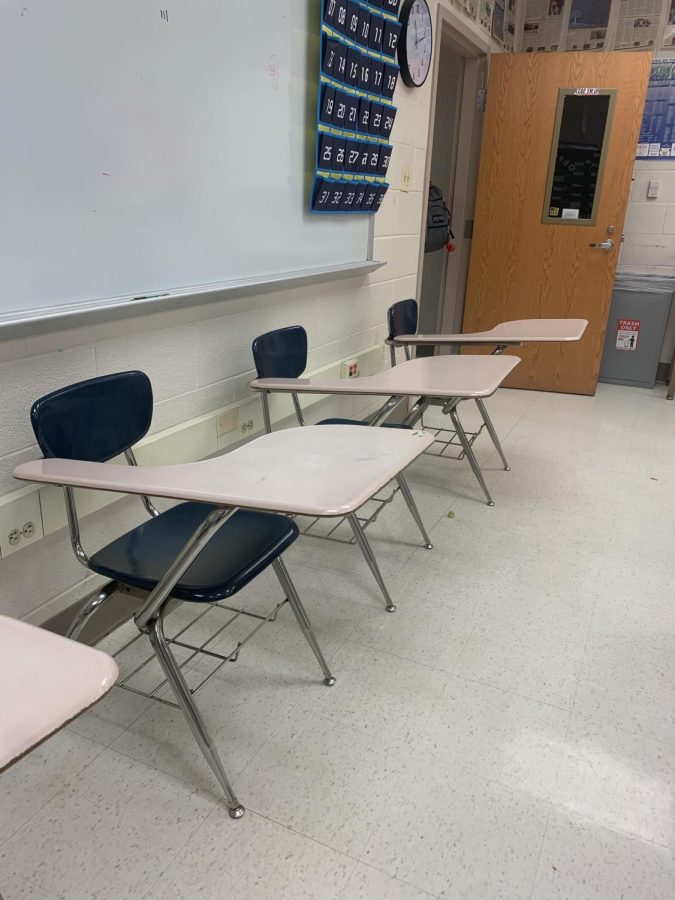WCHS is anti-lefties
Most WCHS classrooms have predominantly right-handed desks which do not accommodate left-handed students.
November 9, 2022
Using spiral notebooks, cutting with scissors and dealing with ink smudges while writing are just a few of the struggles that left-handers have to deal with. Navigating a world with man-made objects primarily built to accommodate right-handers offers challenges for lefties. Not only are these challenges present in the general world, but they are present at WCHS.
Most classrooms have either a mix of right-handed and rectangular desks, or solely right-handed desks. These right-handed desks are L-shaped, with the return/wing portion that serves as a hand rest on the right-hand side. They offer no arm support since the entire structure of the desk is geared towards a right-handed person. Among all classrooms, left-handed desks do not exist at WCHS. Most righties have never thought about this as a problem, or how it impacts their left-handed peers.
It can be uncomfortable for lefties to awkwardly write with their left arm hanging in mid-air due to the lack of arm support these right-handed desks offer. Additionally, using right-handed desks can be frustrating and even distracting at times for lefties when trying to focus on a test or hand-write an essay.
For a left-handed person, spending hours upon hours each week sitting cramped up in a right-handed desk can be agonizing. Left-handed students may develop back and shoulder pain from having no other choice but to uncomfortably twist their bodies so that they are able to write on paper.
According to a study led by the National and Kapodistrian University of Athens, lefties make up approximately 10.6% of the world’s population. Shouldn’t that be accounted for at a school with over 2,000 students?
It’s important for all students to feel comfortable in their classrooms, which is why it’s crucial for WCHS to accommodate left-handers.
If a handful of left-handed desks were added into classrooms, or rectangular desks were more spread out among WCHS classrooms, left-handed students would have the opportunity to learn in a more-comfortable desk, fit to their biological needs.
Nevertheless, the issue may still prevail due to the fact that most teachers implement assigned seating charts for their classes, oftentimes giving students no choice in the desk in which they sit. This means that if the addition of left-handed desks were to be carried through, they may not end up benefiting left-handed students and, even worse, they may hinder right-handed students depending on where they are assigned to sit. Therefore, the only viable solution to the issue would be to impose that all desks at WCHS are the rectangular, neutral desks that accommodate all students, despite their handedness.
From using kitchen gadgets to writing in three-ring binders, lefties are constantly hindered in more ways than one may think. One place where lefties should not have to struggle to feel accommodated within their environment is school. The majority of desks at WCHS being right-handed desks is a problem. No student should feel uncomfortable while learning, which is why classrooms need to have uniformly rectangular desks, or the addition of a few left-handed desks.



